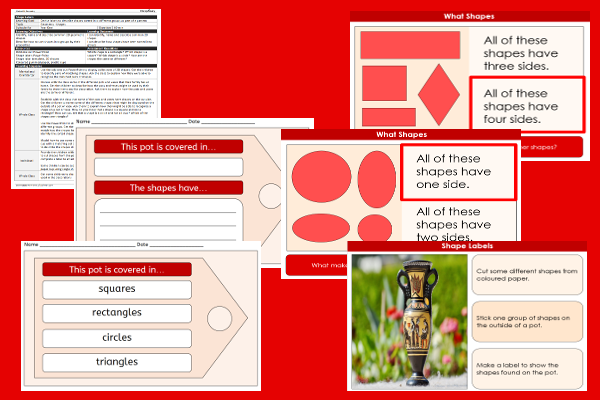Home > Key Stage One > Maths > Year One Planning > Term One
Lesson Four – Shape Labels

This maths teaching pack for Key Stage One gets the children to devise and complete labels that can be used to identify and describe shapes sorted into different groups as part of a decorative pattern on a pot.
The class can explain and illustrate how they can identify different geometric shapes by their matching properties including the number of sides and corners.
Download this teaching pack including a lesson plan, classroom activities and an interactive presentation to teach the children to devise and complete labels that can be used to identify and describe shapes sorted into different groups as part of a decorative pattern on a pot
Activities in this teaching pack include differentiated templates to select and record information about some of the different shapes that have been used on a decorative pattern on a pot to describe their matching individual properties.
The interactive presentation gets the children to explain how they can identify a range of specific 2D shapes that can be seen in something by their matching properties including the number of sides and corners.
This lesson is part of a maths scheme of work to get the children to name, describe and compare a range of different 2D shapes by their matching properties by sorting and grouping shapes with the same geometric characteristics. There are teaching activities for shared learning, differentiated worksheets to support independent learning and interactive presentations to introduce concepts and key skills.
-

Maths Measurement Assessment
Assess abilities in estimating, measuring and comparing a range of different measurements for length, mass and capacity
-

Family Life
Investigate and reflect on some of the special events and experiences that might happen in the life of a family
-

Final Sounds Word Guess
Practise playing some guessing and matching games to identify the spelling and meaning of words with different final sounds
-

Building Reports
Explore how to collect facts and information to work with when composing and presenting non-chronological reports about buildings that can be found in the local area
